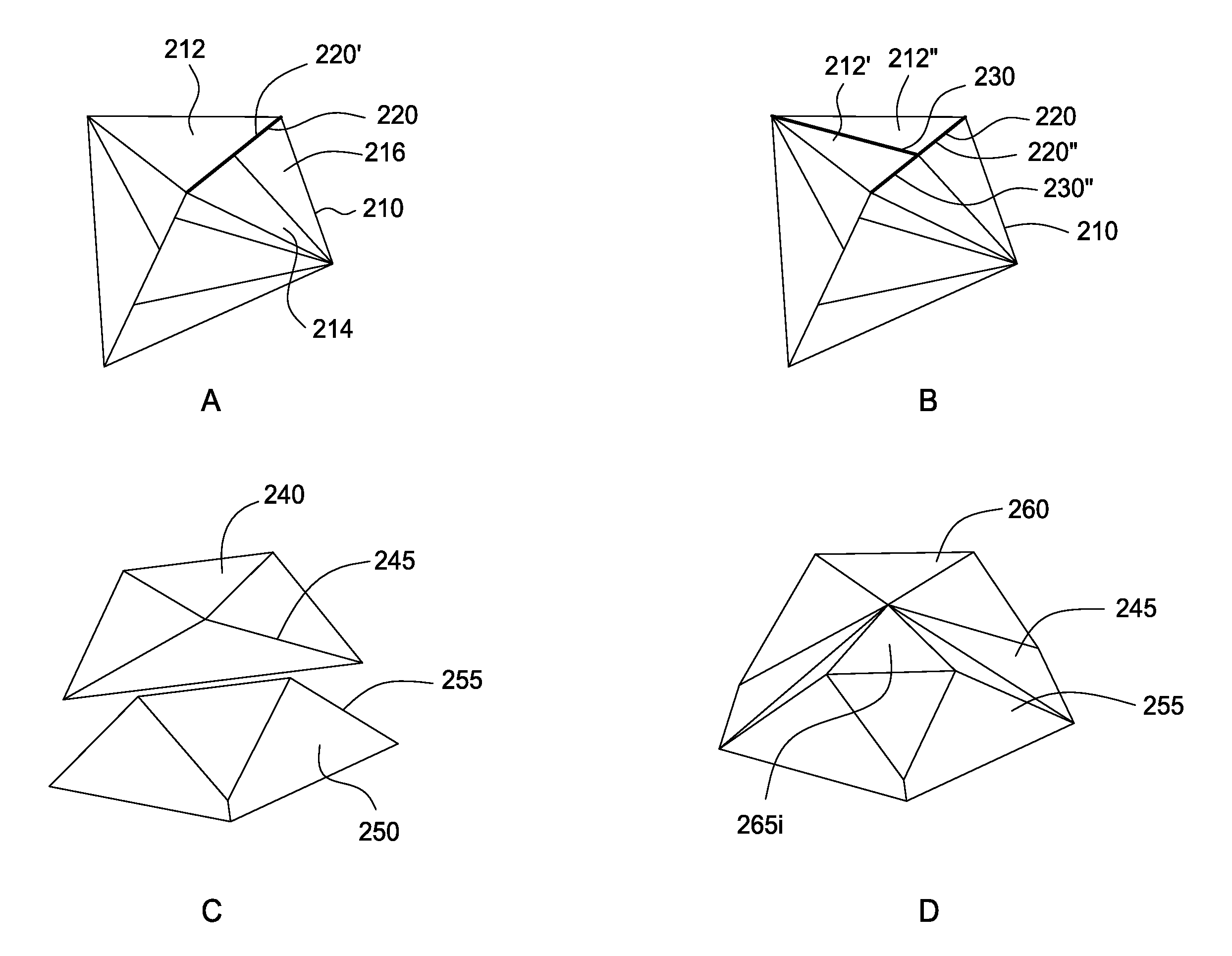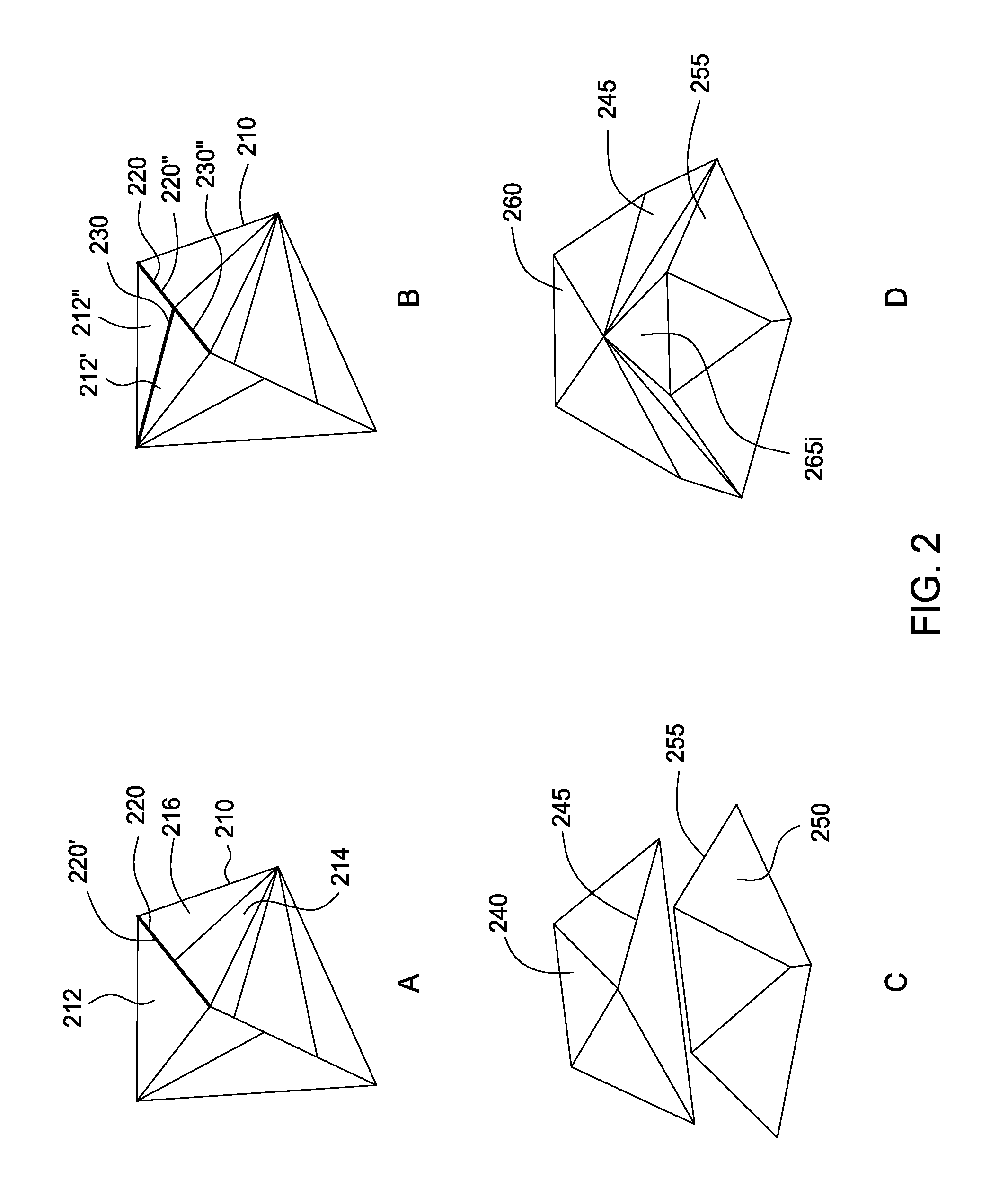Three-dimensional printing preparation
a three-dimensional printing and geometry technology, applied in the field of computer software, can solve the problems of 3d printers not being able to perfectly reproduce arbitrary geometry, 3d printers are limited by resolution, printer size, accuracy, etc., and the limitations of 3d printers are obvious
- Summary
- Abstract
- Description
- Claims
- Application Information
AI Technical Summary
Benefits of technology
Problems solved by technology
Method used
Image
Examples
Embodiment Construction
[0029]Embodiments disclosed herein provide techniques for preparing geometry for 3D printing. Many 3D printers are unable to print non-manifold geometry, i.e., geometry that does not have a well-defined inside and outside. In one embodiment, a 3D printing preparation application receives 3D geometry (e.g., a triangle mesh or a set of triangles, each of whose edges may be merged to form a triangle mesh) and repairs non-manifold edges and non-manifold vertices, producing geometry which is a topological manifold.
[0030]The 3D printing preparation application then welds coincident edges without coincident faces and fills holes in the geometry. The 3D printing preparation application may further perform resolution-aware thickening of the 3D geometry by estimating distances to a medial axis based on distances to distance field shocks, and advecting the distance field using a velocity field. Doing so thickens small parts which would otherwise be smoothed out, disappear, be weak, etc. in pri...
PUM
 Login to View More
Login to View More Abstract
Description
Claims
Application Information
 Login to View More
Login to View More - R&D
- Intellectual Property
- Life Sciences
- Materials
- Tech Scout
- Unparalleled Data Quality
- Higher Quality Content
- 60% Fewer Hallucinations
Browse by: Latest US Patents, China's latest patents, Technical Efficacy Thesaurus, Application Domain, Technology Topic, Popular Technical Reports.
© 2025 PatSnap. All rights reserved.Legal|Privacy policy|Modern Slavery Act Transparency Statement|Sitemap|About US| Contact US: help@patsnap.com



